Rancher
Ondat is a certified Rancher application. We offer two installation methods:
- Rancher Catalogue - this is the easiest and requires just a few clicks
- Manual - allowing more control and visibility
Before proceeding, ensure that you have followed our prerequisites. On Rancher, pay particular attention to the OS version and image used - some platforms require extra mainline kernel modules to be enabled.
Catalog Install
Estimated time to complete the installation: 45 min
Ondat is a Certified application in the Rancher Catalog. You can install Ondat using the Rancher application install.
Before completing the steps below, you will need an etcd cluster. For evaluation use our simple test recipe. For production installations, follow our production recipe. Make a note of the etcd endpoint URL in either case.
-
Select the
Systemproject of your cluster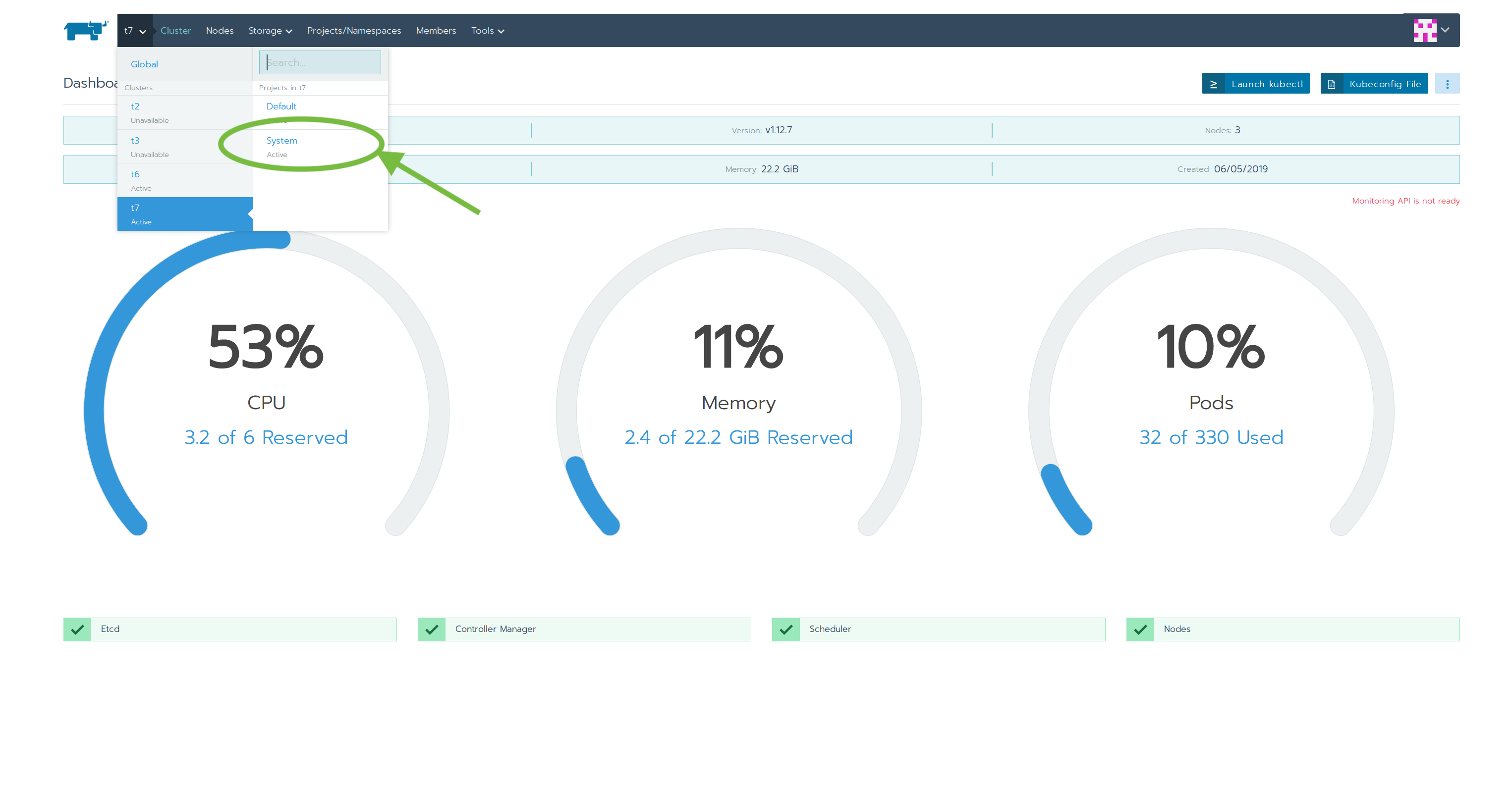
-
Select the
Appstab and clickLaunch
-
Search for Ondat and click on the App

This will install the Ondat operator, which manages the Ondat DaemonSet.
-
Check and ammend installation options
A generic configuration for Ondat is preset using the default values in the form. Be sure to check the etcd address and ensure it matches the value you noted at the beginning of this guide.
The catalog form exposes several useful parameters - documented below.
For further customization, you can opt to set the option to ‘Install Ondat Cluster’ to false and install a custom CR. See below for this.
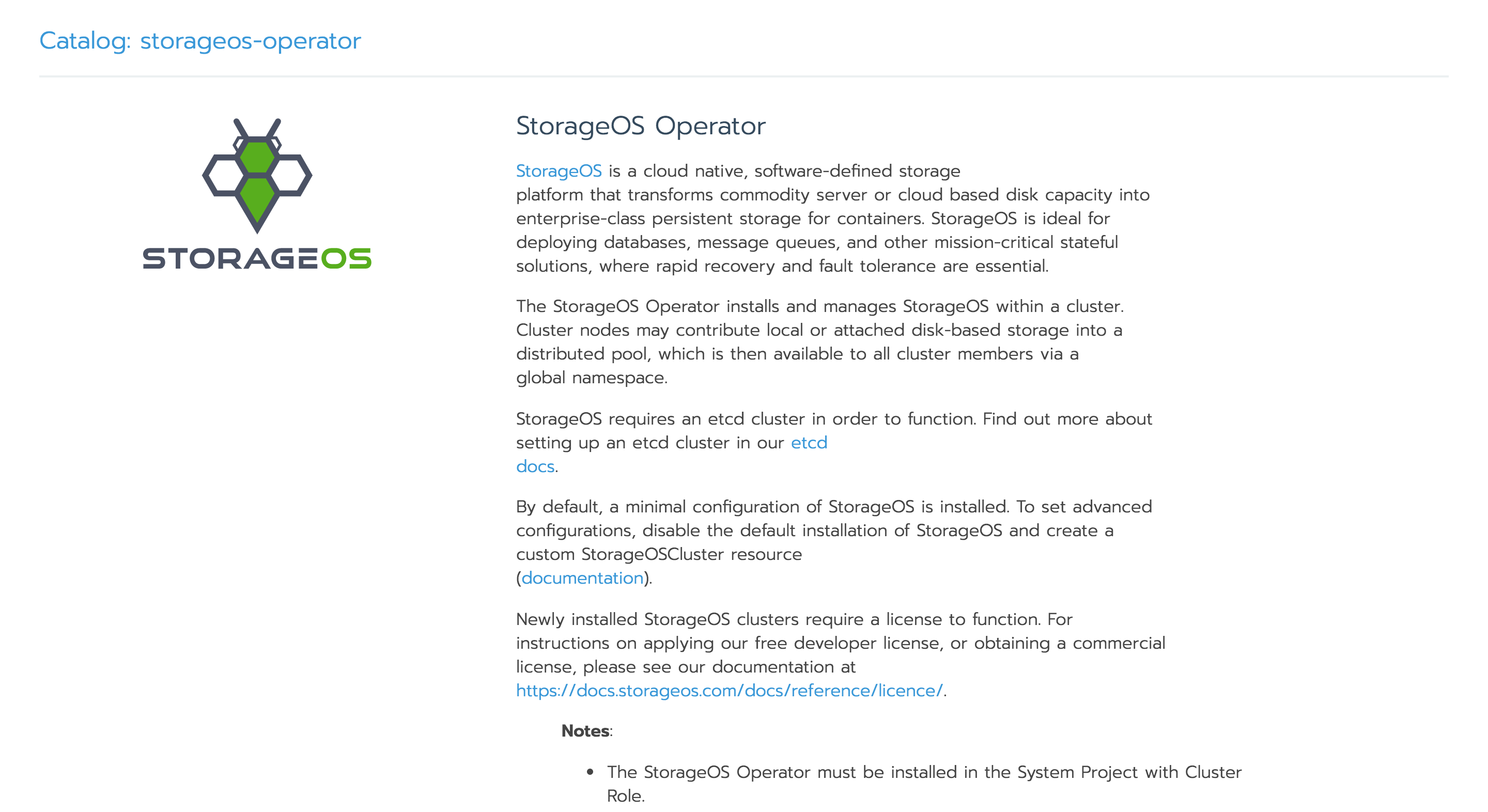
-
Launch the Ondat cluster

-
Verify the cluster bootstrap has successfully completed

-
License the newly installed cluster
Newly installed Ondat clusters must be licensed within 24 hours. Our personal license is free, and supports up to 1TiB of provisioned storage.
You will need access to the Ondat API on port 5705 of any of your nodes. For convenience, it is often easiest to port forward the service using the following kubectl incantation (this will block, so a second terminal window may be advisable):
$ kubectl port-forward -n storageos svc/storageos 5705Now follow the instructions on our licensing operations page to obtain and apply a license.
Installation of Ondat is now complete.
Simple Customization - Modify Catalog Form
The following options are exposed by the catalog form to allow some simple customization of the Ondat installation.

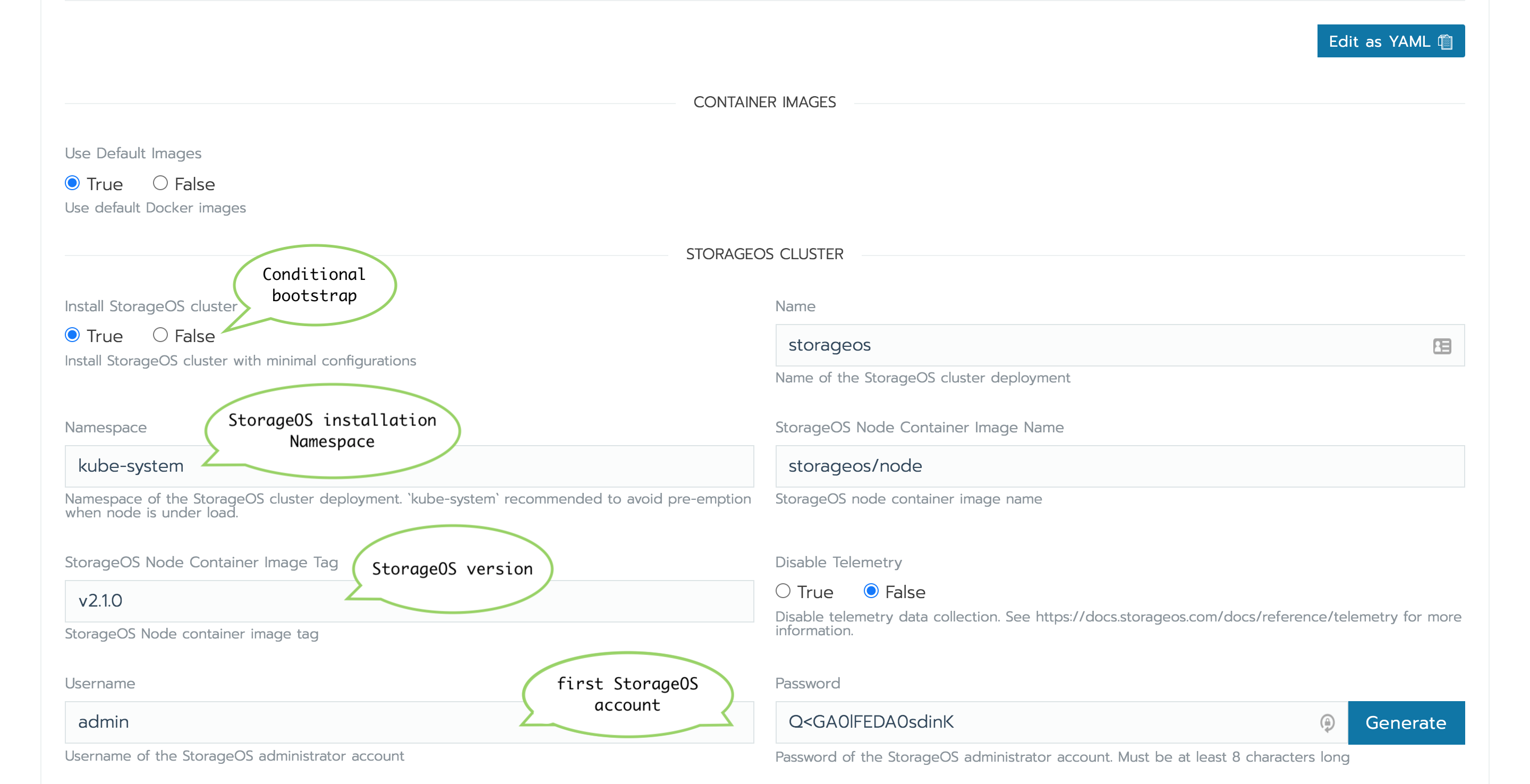
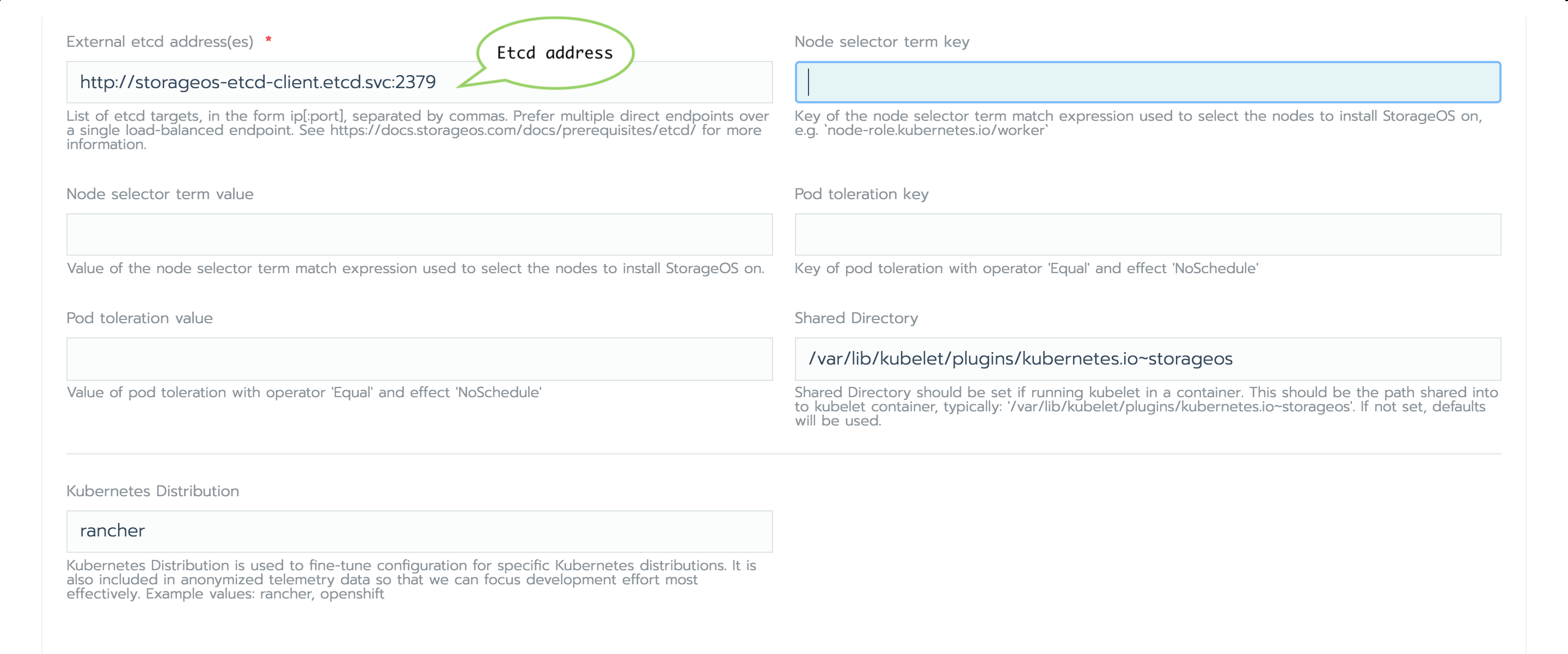
- Cluster Operator namespace : The Kubernetes namespace where the Ondat Cluster Operator and other resources will be created.
- Container Images : By default images are pulled from DockerHub, you can
- specify the image URLs when using private registries.
- Install Ondat cluster
: Controls the automatic deployment of Ondat after installing the Cluster
Operator. If set to
false, the Operator will be created, but a Custom Resource will not be applied to the cluster. Launch the operator and proceed to the section Advanced Customization below. - Namespace : The Kubernetes namespace where Ondat will be
installed. By default, Ondat installs into the
storageosnamespace, which will add a priority class to ensure high priority resource allocation. Installing Ondat with the priority class prevents Ondat from being evicted during periods of resource contention. It is inadvisable to modify this under normal circumstances. - Username/Password : Default Username and Password for the admin account
to be created at Ondat bootstrap. A random password will be generated by
leaving the field empty or clicking the
Generatebutton. - External etcd address(es) : Connection and configuration details for an external Etcd cluster.See our documentation here.
- Node Selectors and Tolerations : Control placement of Ondat DaemonSet Pods. Ondat will only be installed on the selected nodes.
- Tolerations : Define any tolerations you wish the DaemonSet to observe.
Advanced Customization - Apply Custom CR
If Install Ondat Cluster was set to false, Ondat will not be
bootstrapped automatically. After the Ondat Operator is installed, you can
now create a Custom Resource that describes the Ondat cluster.
-
Select the
System WorkloadsandImport YAML
-
Create the
SecretandCustomResource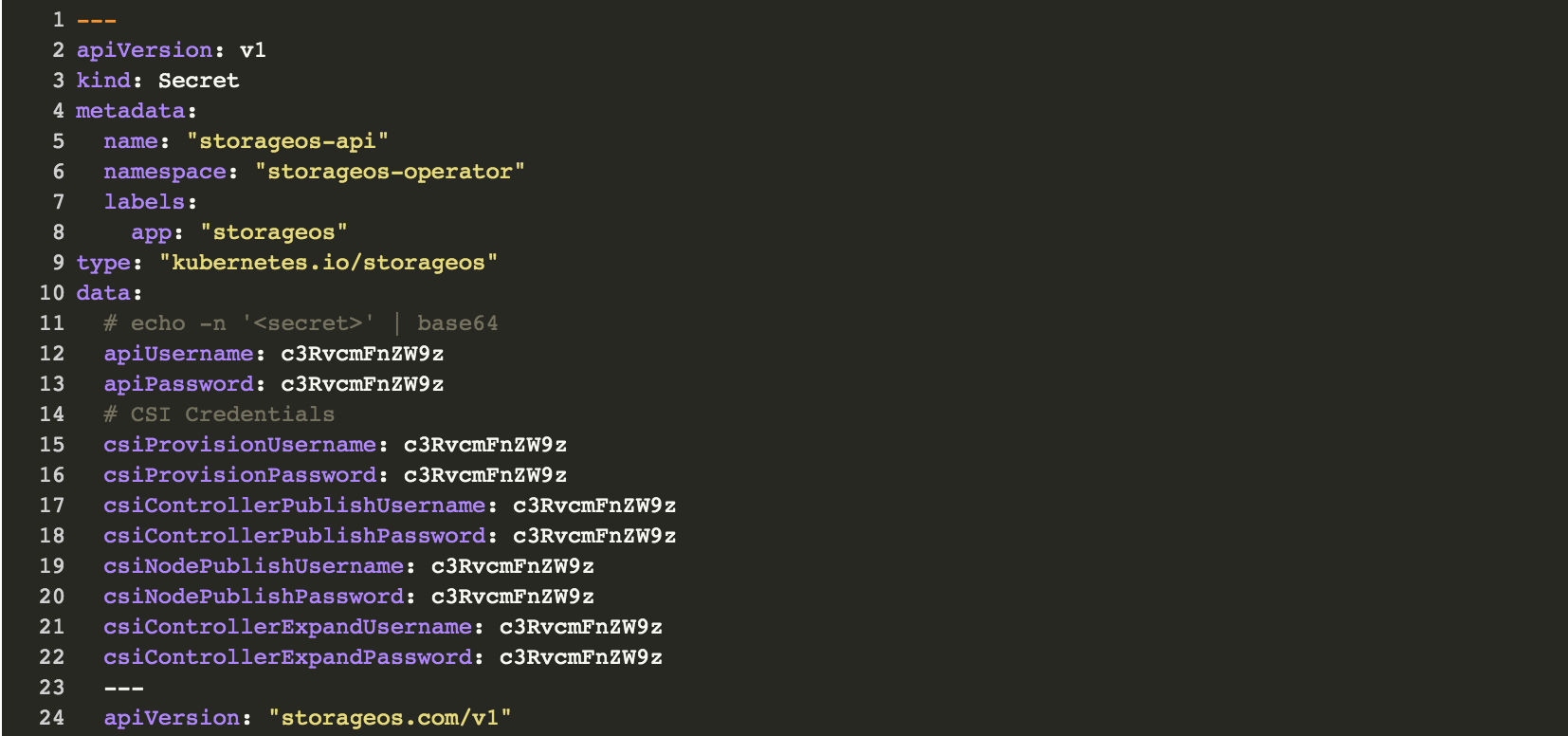
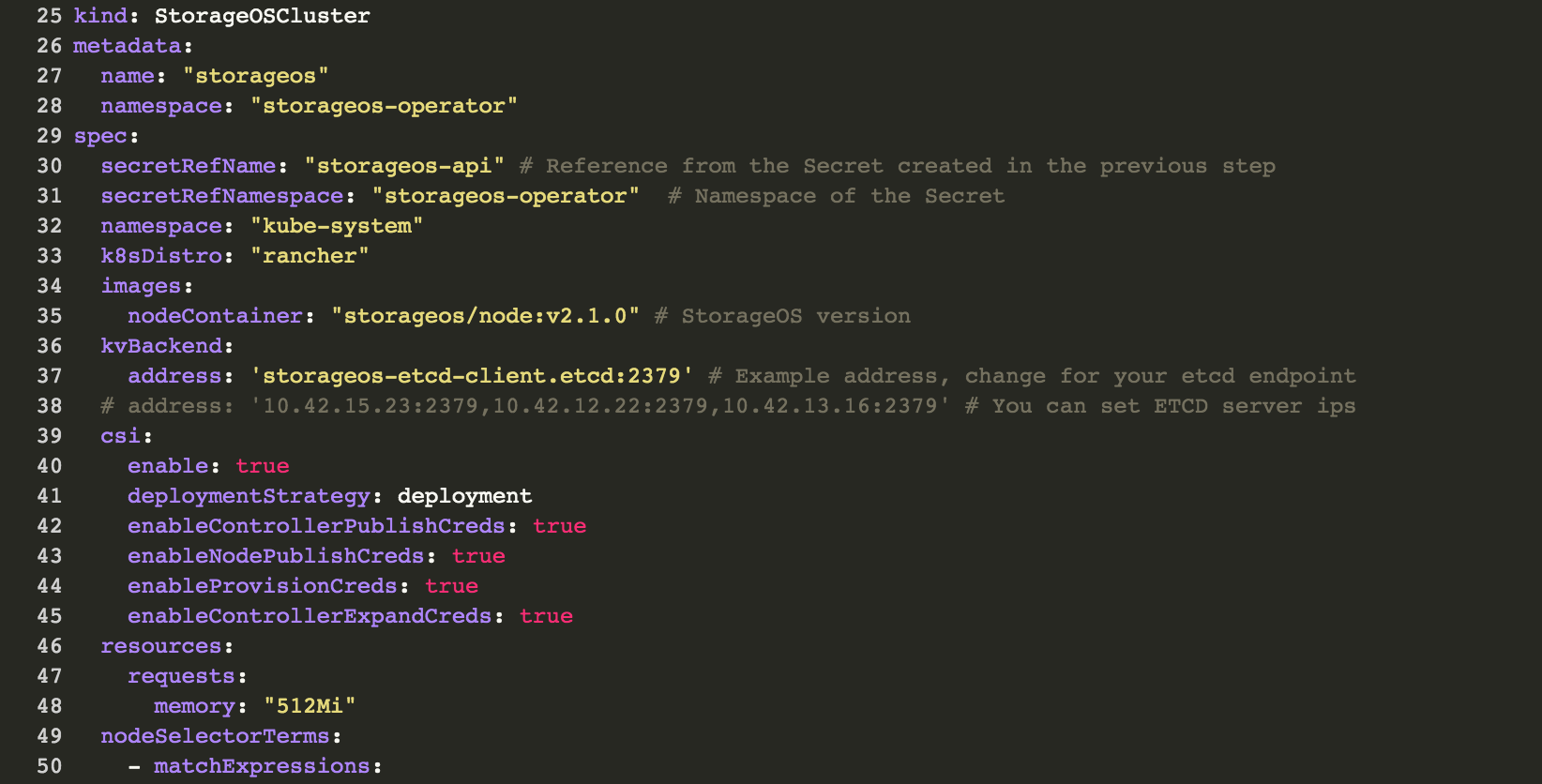
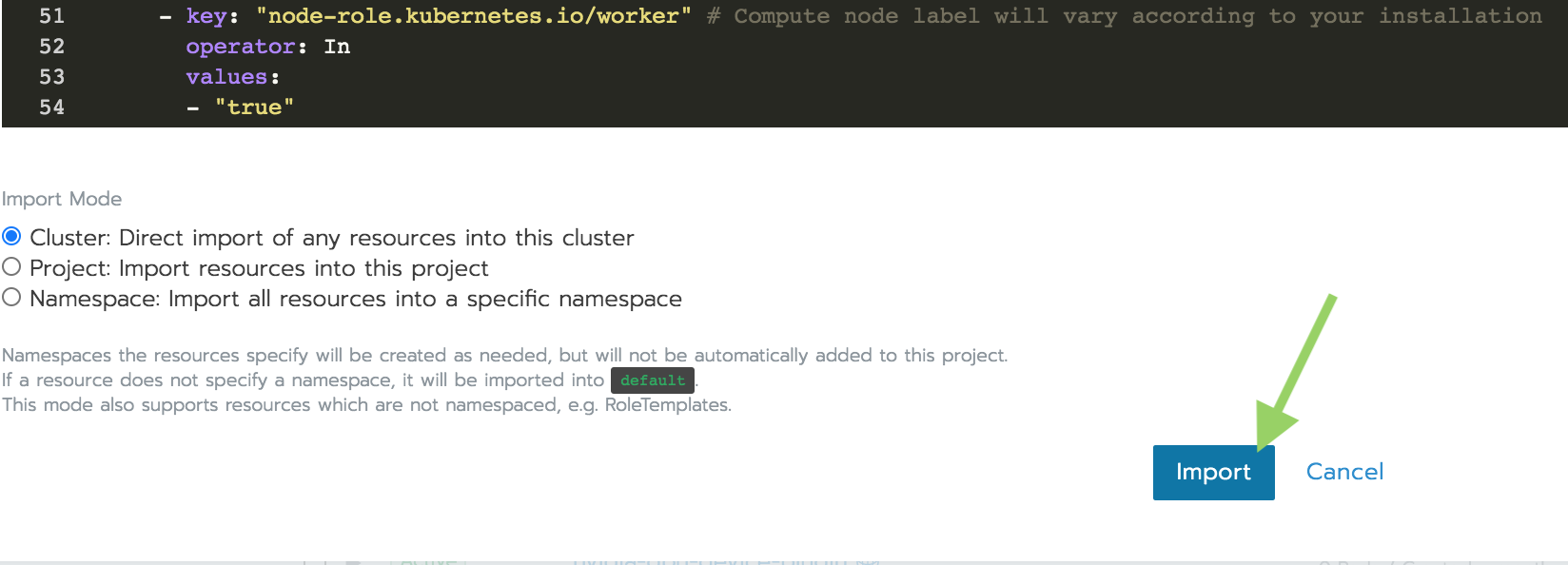
This is an example.
--- apiVersion: v1 kind: Secret metadata: name: "storageos-api" labels: app: "storageos" type: "kubernetes.io/storageos" data: # echo -n '<secret>' | base64 username: c3RvcmFnZW9z password: c3RvcmFnZW9z --- apiVersion: "storageos.com/v1" kind: StorageOSCluster metadata: name: "storageos" spec: # Ondat Pods are in storageos NS by default secretRefName: "storageos-api" # Reference from the Secret created in the previous step k8sDistro: "rancher" storageClassName: "ondat" # The storage class created by the Ondat operator is configurable images: nodeContainer: "storageos/node:v2.5.0" # Ondat version kvBackend: address: 'storageos-etcd-client.etcd:2379' # Example address, change for your etcd endpoint # address: '10.42.15.23:2379,10.42.12.22:2379,10.42.13.16:2379' # You can set ETCD server ips sharedDir: '/var/lib/kubelet/plugins/kubernetes.io~storageos' # Needed when Kubelet as a container resources: requests: memory: "512Mi" nodeSelectorTerms: - matchExpressions: - key: "node-role.kubernetes.io/worker" # Compute node label will vary according to your installation operator: In values: - "true"Additional
specparameters are available on the Cluster Operator configuration page.You can find more examples such as deployments referencing a external etcd kv store for Ondat in the Cluster Operator examples page.
Manual Installation
Install the storageos kubectl plugin
Estimated time to complete the installation: 5-10 min
curl -sSLo kubectl-storageos.tar.gz \
https://github.com/storageos/kubectl-storageos/releases/download/v1.0.0-beta.1/kubectl-storageos_1.0.0-beta.1_linux_amd64.tar.gz \
&& tar -xf kubectl-storageos.tar.gz \
&& chmod +x kubectl-storageos \
&& sudo mv kubectl-storageos /usr/local/bin/ \
&& rm kubectl-storageos.tar.gz
You can find binaries for different architectures and systems in kubectl plugin.
Install Ondat
kubectl storageos install \
--etcd-endpoints 'storageos-etcd-client.storageos-etcd:2379' \
--admin-username "myuser" \
--admin-password "my-password"
Define the etcd endpoints as a comma delimited list, e.g. 10.42.3.10:2379,10.42.1.8:2379,10.42.2.8:2379
If the etcd endpoints are not defined, the plugin will promt you and request the endpoints.
For more details on the installation options, check the kubectl storageos plugin reference page.
Verify Ondat installation
Ondat installs all its components in the storageos namespace.
$ kubectl -n storageos get pod -w
NAME READY STATUS RESTARTS AGE
storageos-api-manager-65f5c9dbdf-59p2j 1/1 Running 0 36s
storageos-api-manager-65f5c9dbdf-nhxg2 1/1 Running 0 36s
storageos-csi-helper-65dc8ff9d8-ddsh9 3/3 Running 0 36s
storageos-node-4njd4 3/3 Running 0 55s
storageos-node-5qnl7 3/3 Running 0 56s
storageos-node-7xc4s 3/3 Running 0 52s
storageos-node-bkzkx 3/3 Running 0 58s
storageos-node-gwp52 3/3 Running 0 62s
storageos-node-zqkk7 3/3 Running 0 62s
storageos-operator-8f7c946f8-npj7l 2/2 Running 0 64s
storageos-scheduler-86b979c6df-wndj4 1/1 Running 0 64s
Wait until all the pods are ready. It usually takes ~60 seconds to complete
License cluster
Newly installed Ondat clusters must be licensed within 24 hours. Our developer license is free, and supports up to 5TiB of provisioned storage.
To obtain a license, follow the instructions on our licensing operations page.
First Ondat volume
If this is your first installation you may wish to follow the Ondat Volume guide for an example of how to mount a Ondat volume in a Pod.